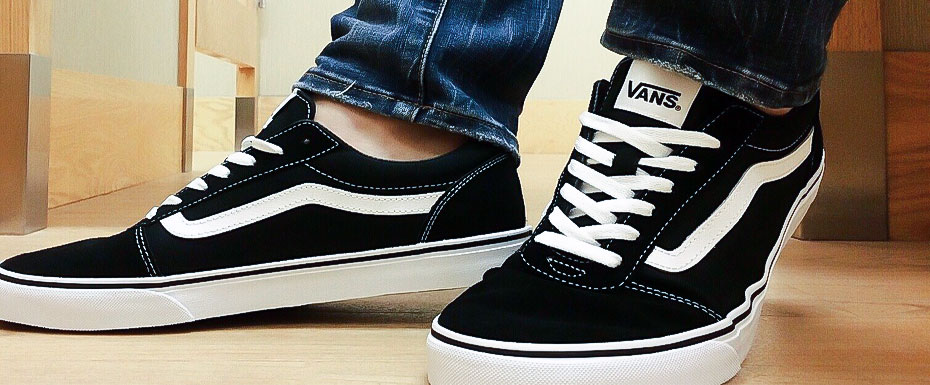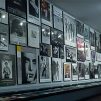
Vans is a famous shoe manufacturer from California founded in 1966. This brand is renowned for its sneakers made of cotton canvas and is especially popular among extreme guys. In this article, you will find out about the company’s history – from the first factory to world fame. So, enjoy reading!
The Van Doren Brothers
Paul Van Doren was born in 1930 in Boston, and his little brother James came into the world nine years later – these future Vans founders were the sons of an inventor and a seamstress. At the age of 14, Paul Van Doren dropped out of school and became addicted to horse racing, his mother could not accept it, and soon she got Paul a job at the Randolph Rubber Manufacturing Co. factory, where she also worked. There the future entrepreneur was engaged in cleaning and getting acquainted with the manufactory structure.
Unlike his older brother, James Van Doren graduated from high school and even attended university for two years. After that, he also took a job at Randolph Rubber Manufacturing Co., where he pursued a managerial position for ten years. Despite his lack of education, Paul Van Doren also built a successful career – in twenty years, he was promoted to vice president.
In the early ’60s Randolph Rubber Manufacturing Co, or simply Randy’s, was the third-largest American athletic shoe factory. Randy’s sneakers were worn by Bob Cousy, the famous American basketball player and an honorary member of the Basketball Hall of Fame. And all would have been well, but Randy’s factory in California started losing money. To remedy the situation, the successful managers Paul and James Van Doren were sent to Gardenvale, where the brothers had to take control of the problem.
The Birth of Vans
Together with their colleague and associate Gordon Lee, the brothers put the factory in order. In eight months, it made more money than the Boston factory the Van Dorens had previously operated. It was more than a victory because the result ensured that they could run the business themselves. Three months after that, Paul Van Doren decides to quit Randy’s and start his own business.

Paul Van Doren spent his whole life working in a shoe factory. He knew everything about shoes, and his brother James was an experienced engineer. They easily figured out the formula for a durable rubber sole, and Gordon Lee was an excellent manager promoting their goods. Joining forces with importer Serge D’Elia, who could find the best materials, they founded the Van Doren Rubber Company, today known as Vans.
Paul Van Doren and Serge D’Elia each received a 40% stake, and James Van Doren and Gordon Lee each received a 10% stake. To establish the factory in Anaheim, the entrepreneurs scoured the whole of America in search of used equipment, and eventually, the building and finishing of the premises were completed in 1965. In addition to the production shops, the building also housed a store, which was scheduled to open on January 1, 1966, but did not take place until March 1, which is considered the birthday of Vans.
The Early Years
The first manager of the Van Doren Rubber Company store was Paul Van Doren’s wife, and Paul himself served as a salesman. Initially, the entire assortment of the brand had no names; instead, each model was assigned a number. So, for example, the legendary Authentic silhouette was #44, and the classic Slip-Ons were #48. Sixteen pairs of Vans were sold on the first day. To purchase the sneakers, the buyer had to choose a model and color and make a prepayment. By the next day, the factory produced the shoes, and the buyer picked them up.
At the time, there were several other strong sneaker manufacturers operating in the U.S., including Converse, PF Flyers, and Randy’s. The Van Dorens wanted their products to be more durable than their competitors’ shoes, so they approached production accordingly. Serge D’Elia arranged for shipments of dense sailcloth from Japan, and James Van Doren made the famous waffle sole, which was twice as thick as the PF Flyers. Vans used nylon instead of cotton threads, and the whole Vans philosophy was based on making hard-wearing sneakers, and the only advertising was word of mouth.
It is amazing how quickly the popularity of the company grew, which contributed to its success. Ten weeks after opening, Vans had 10 stores, and a year and a half later, they had 50, but over time growth slowed, and some of them closed. Meanwhile, other sports retailers were interested in Vans shoes, and by the early 1970s, the company’s products were available outside of California.
Skateboarding Shoes
Almost from day one, Vans allowed custom sneakers to be made from materials available in its stores. Most people chose subdued hues, but then the explosion in popularity of skateboarding and BMX bikes began, making bright colors very desirable, especially among young people involved in extreme sports. Local skaters fell in love with Vans shoes, and the brand started to think about a unique product for powerful skaters.

So in 1975, the Vans Era sneakers appeared, known initially as #95. The design of the Era is similar to the Authentic: a classic canvas shoe shape and a thick vulcanized rubber sole. The main difference is the thick collar that protects the ankle from the skateboard. Tony Alva and Stacy Peralta, the famous skateboarders of that time, took part in the development of the model. The product was a real hit – the sneakers that saved the athletes’ feet.
In 1977, the Old Skool (#36) came out with genuine leather inserts, a padded collar, and a signature sole. But, according to the designers’ idea, these sneakers had to become even more durable. A year later, a taller version of the silhouette, known today as the Sk8-Hi, appeared at number 38. By the end of the ’70s, Vans were so popular among skaters that the company had to establish its own department. From then on, Vans never left skateboarding.
In 1987, Paul Van Doren received an offer to buy Vans, but the deal collapsed due to Black Monday and was made a year later, but at a lower price. As a result, McCown De Leeuw & Co. becomes the owner of Vans – an organization that purchases the companies and subsequently puts their shares on the stock exchange. The new owners tried to work in promising directions, but the plans failed, and Vans moved all production outside the United States.
From the 90s to the Present
In the early ’90s, Vans began to collaborate with businessman and event organizer Kevin Liman. They organized the Vans Warp Tour, an extreme sports festival with music stages and other entertainment for young audiences. Vans soon pulled out of the agreement with Liman, but after a while, the company bought all the rights to the event. Since the mid-90s, the Vans Warp Tour has become an annual event.
The company has done competitions in collaboration with Hard Rock Café and Transworld magazine. Vans events have featured some of the biggest names in professional skateboarding. By the end of the ’90s, these events became a significant source of revenue for Vans company. The brand’s classic assortment gave way to snowboarding boots and a bunch of other new products, but that was absolutely not what Vans fans were looking for.
Steve Van Doren, son of Vans founder Paul, stepped in to revive the brand’s former glory. He had to visit China and place orders in the factory to get the classics reissued under the Vans brand in the early 2000s. After re-releasing the classics, sales have skyrocketed, and the classic silhouettes have never left the Vans collections again. In 2004, Vans was bought by the VF Corporation, a large organization with the rights to dozens of brands.
Today Vans continues to release beloved classics, premium collections and collaborate with fashion brands, artists, designers, and pop culture icons. Vans is one of the world’s largest skateboarding shoemakers and has become a true symbol of casual California style. Vans is a brand without which skateboarding and youth are unthinkable.





